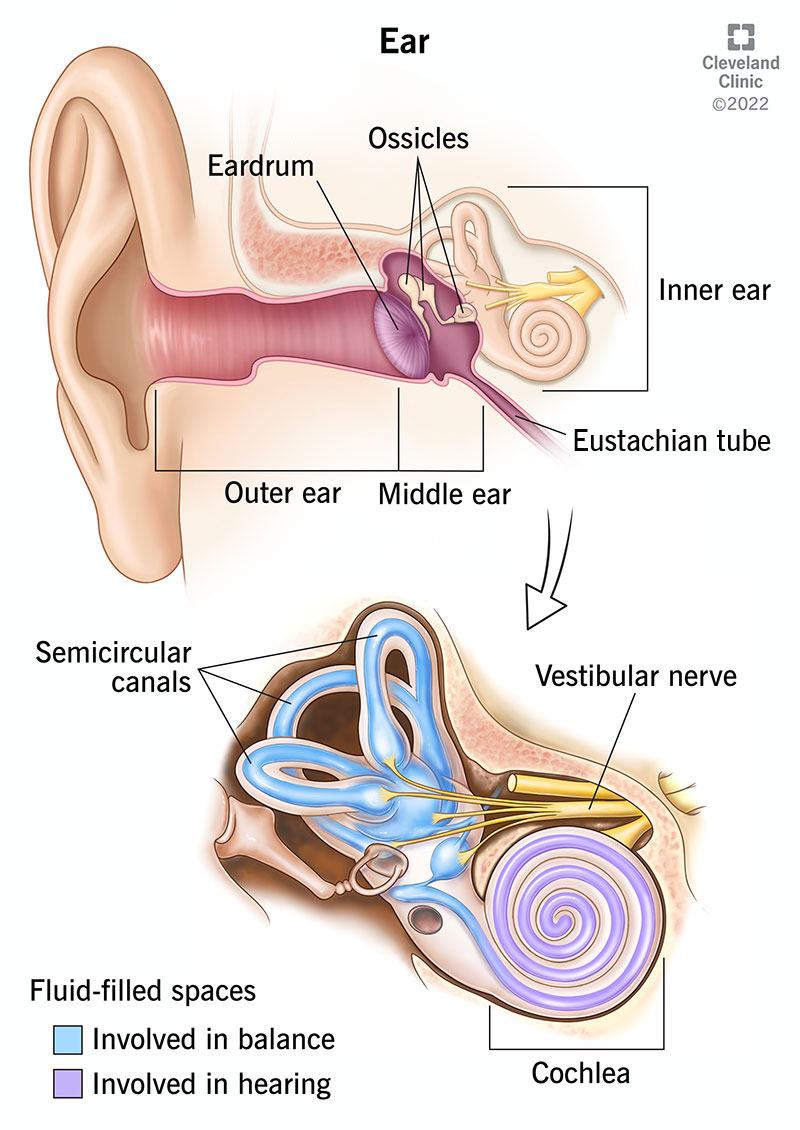
Ear Anatomy, Facts & Function
The middle ear functions to connect the sound waves from the external environment and transfer them to the inner ear for auditory transduction. The auditory ossicles (malleus, incus, and stapes) play a key role in this function. The malleus connects to the tympanic membrane transferring auditory oscillations to the incus and then the stapes. The stapes connects to the oval window allowing for.
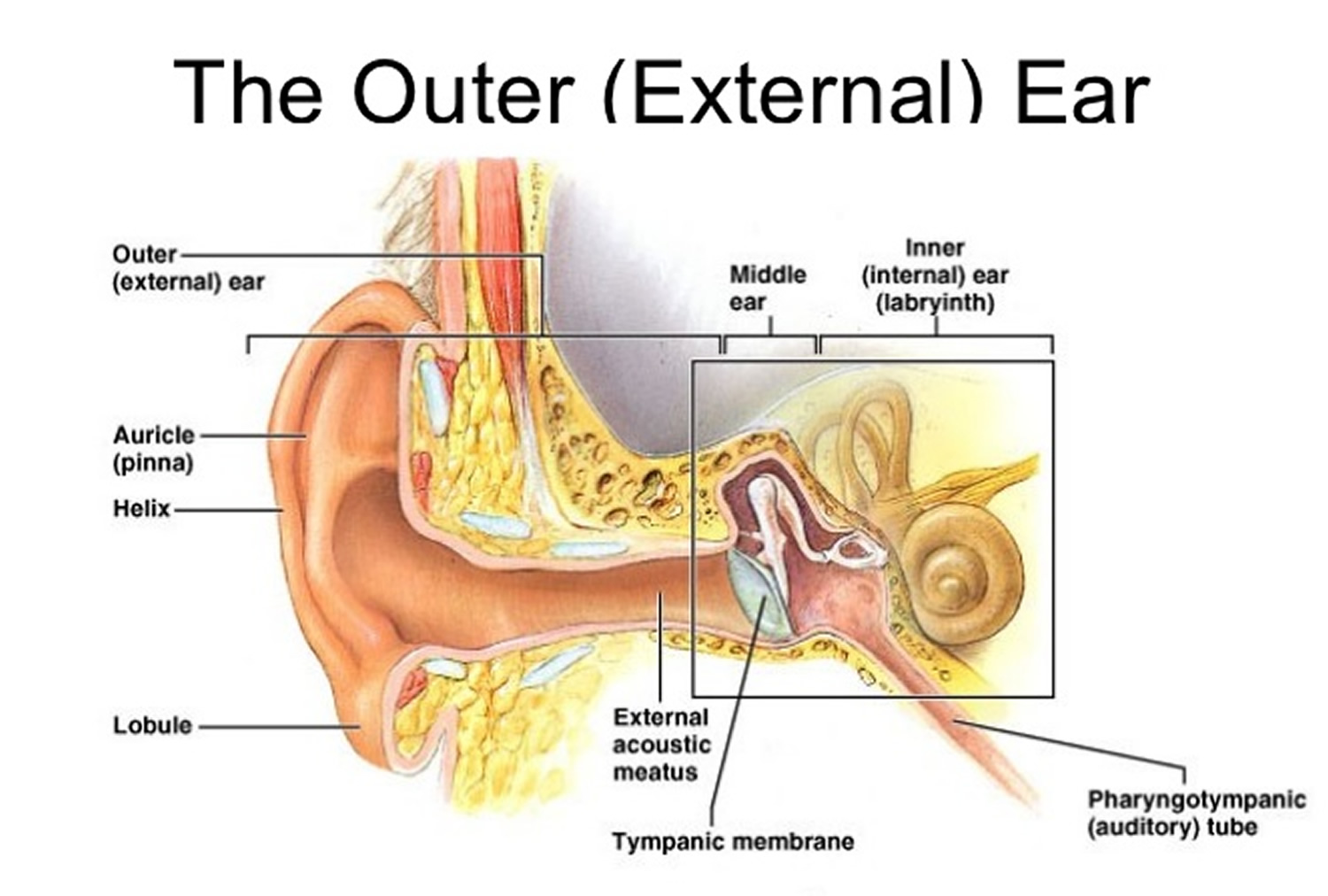
Outer Ear Anatomy Outer Ear Infection & Pain Causes & Treatment
The ear drum is a transparent membrane which is super sensitive to the vibrations of the ear. So as the air vibrates even the ear drum starts vibrating. Just like the skin of a drum. And as you can, the ear drum also separates the outer ear from the middle ear. This brings us to the middle ear.

Afbeeldingsresultaat voor middle ear anatomy Ear anatomy, Middle ear
The middle ear is the portion of the ear medial to the eardrum, and distal to the oval window of the cochlea (of the inner ear).. The mammalian middle ear contains three ossicles (malleus, incus, and stapes), which transfer the vibrations of the eardrum into waves in the fluid and membranes of the inner ear.The hollow space of the middle ear is also known as the tympanic cavity and is.
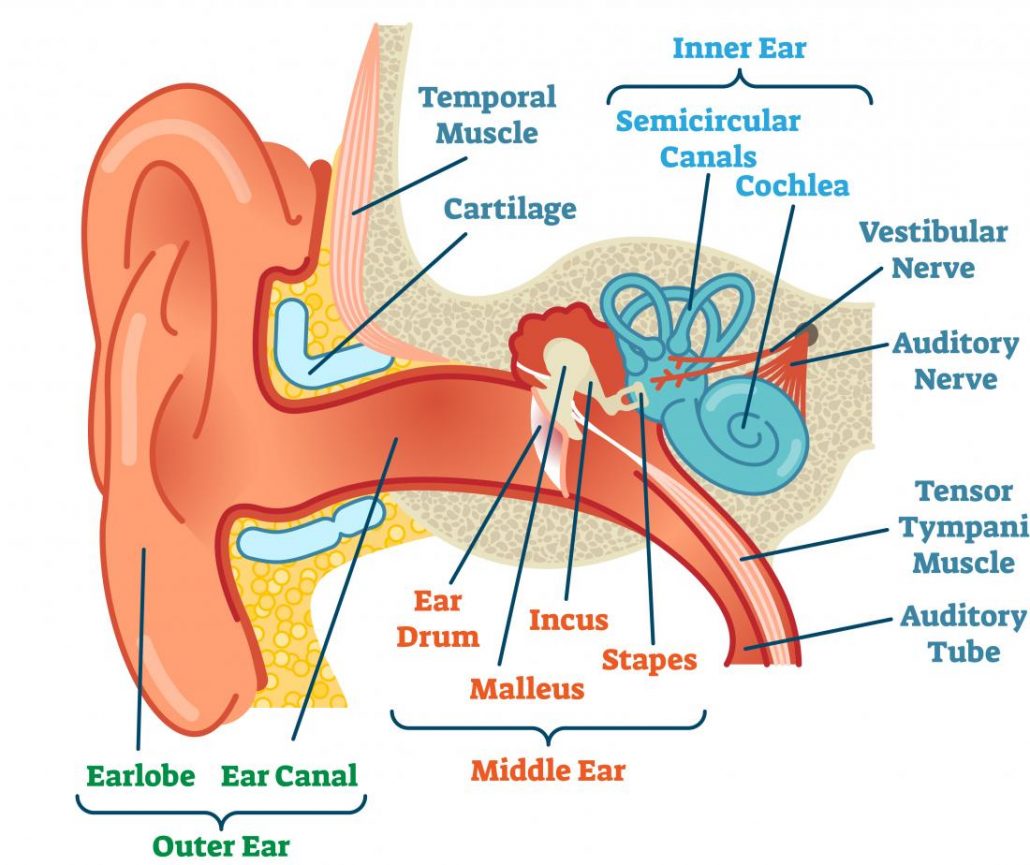
How The Ear Works Step by Step Brief Explanation
The middle ear's auditory ossicles are a chain-like arrangement of three tiny bones that extend from the tympanic membrane to the oval window. The three auditory ossicles are: Malleus or hammer - It has a head, a neck, and a hand. The manubrium or hand is joined to the tympanic membrane. The neck stretches from the hand to the head.
:max_bytes(150000):strip_icc()/GettyImages-604030354-c8303401fceb4371b227b5c975f6f99d.jpg)
Middle Ear Anatomy and Function
It is divided into two parts: Tympanic cavity (adjacent to the tympanic membrane) Epitympanic recess/attic (space superior to the tympanic cavity) Medial (Labyrinthine) Wall The medial (labyrinthine wall) is formed by the lateral aspect of the inner ear.

Hearing Loss Regenerated in Damaged Mammal Ear The Personal Longevity
The middle ear is separated from the external ear by the tympanic membrane (the eardrum) and from the inner ear by a lateral wall that contains the round and oval windows. The anatomy of the middle ear is just part of the complex system that allows you to hear. The middle ear is also called the tympanic cavity or tympanum.

What is conductive hearing loss? Blog of Kiversal
Now, while the inner ear also plays a role in balance, the main role of the external and middle ear is to transfer and amplify sound to the inner ear with the help of the three smallest bones in the body: the auditory ossicles. Let's start with the external ear, which is by far the most common anatomical spot to hang earrings from.
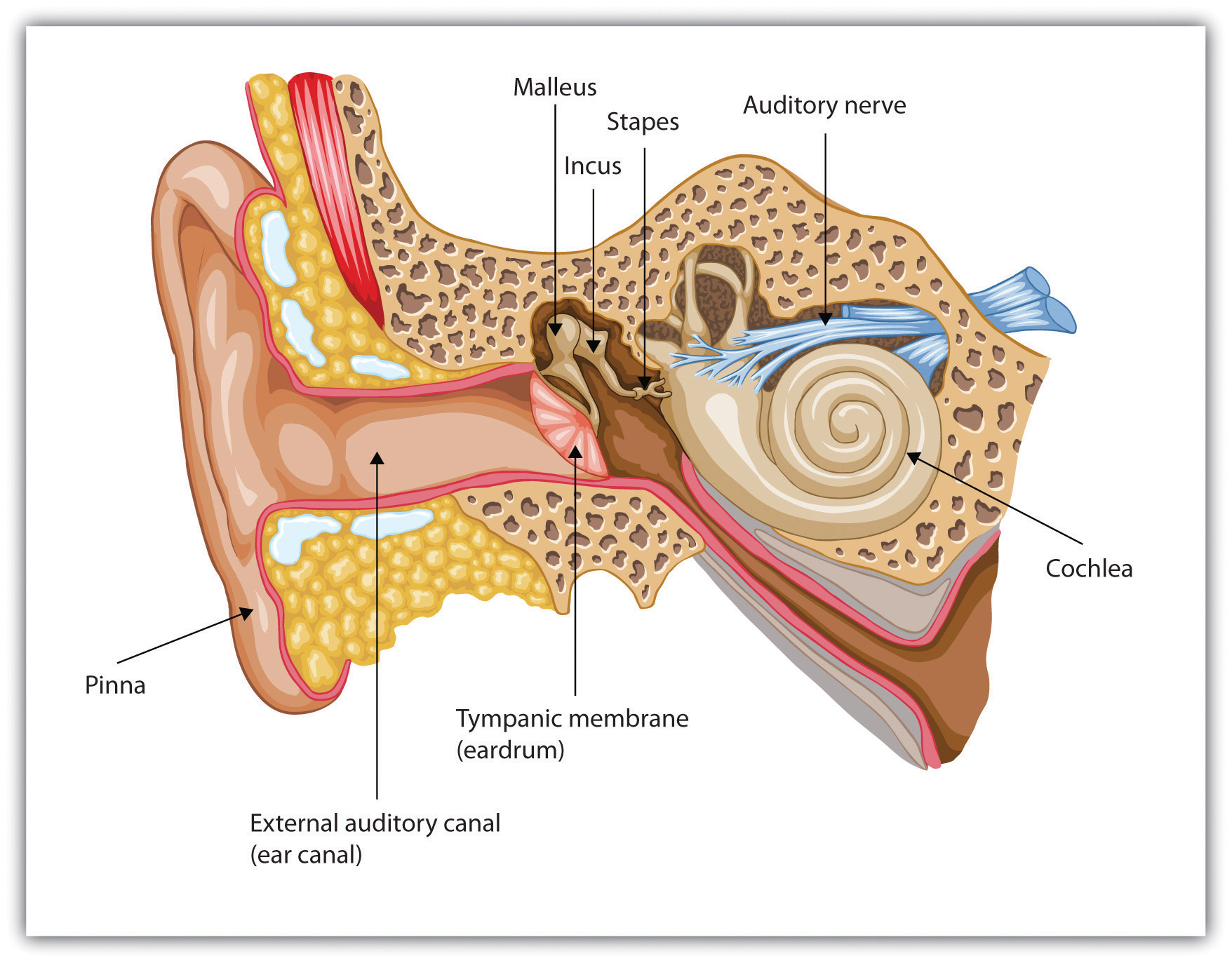
4.3 Hearing Introduction to Psychology
Middle ear Internal ear This mixture of bones, nerves, vessels, membranes, and muscles that make up the ear will be described in this article. Contents External ear Auricle External acoustic meatus Tympanic membrane Muscles of the external ear Vasculature of the external ear Innervation of the external ear Middle ear Tympanic cavity

Solved Label the structures associated with the ear by
Label the structures of the middle ear. Malleus Auditory tube Incus Tensor tympani muscle Round window LA Oval window Stapes This problem has been solved! You'll get a detailed solution from a subject matter expert that helps you learn core concepts. See Answer Question: Label the structures of the middle ear.
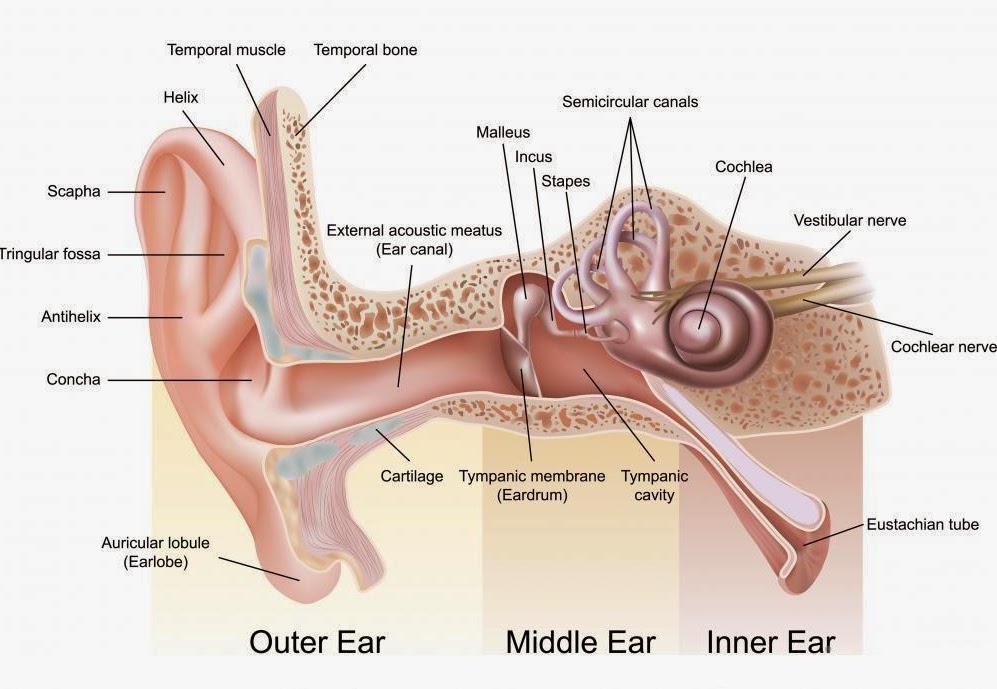
The ear structure and functions Blog of Kiversal
That's why labeling the ear is an effective way to begin your revision. It helps you to memorize the names and their locations, which in turn will aid you to remember their functions. Below, you can download both the blank ear diagram to make some notes, and then try labeling the ear using the unlabeled ear diagram. Good luck!
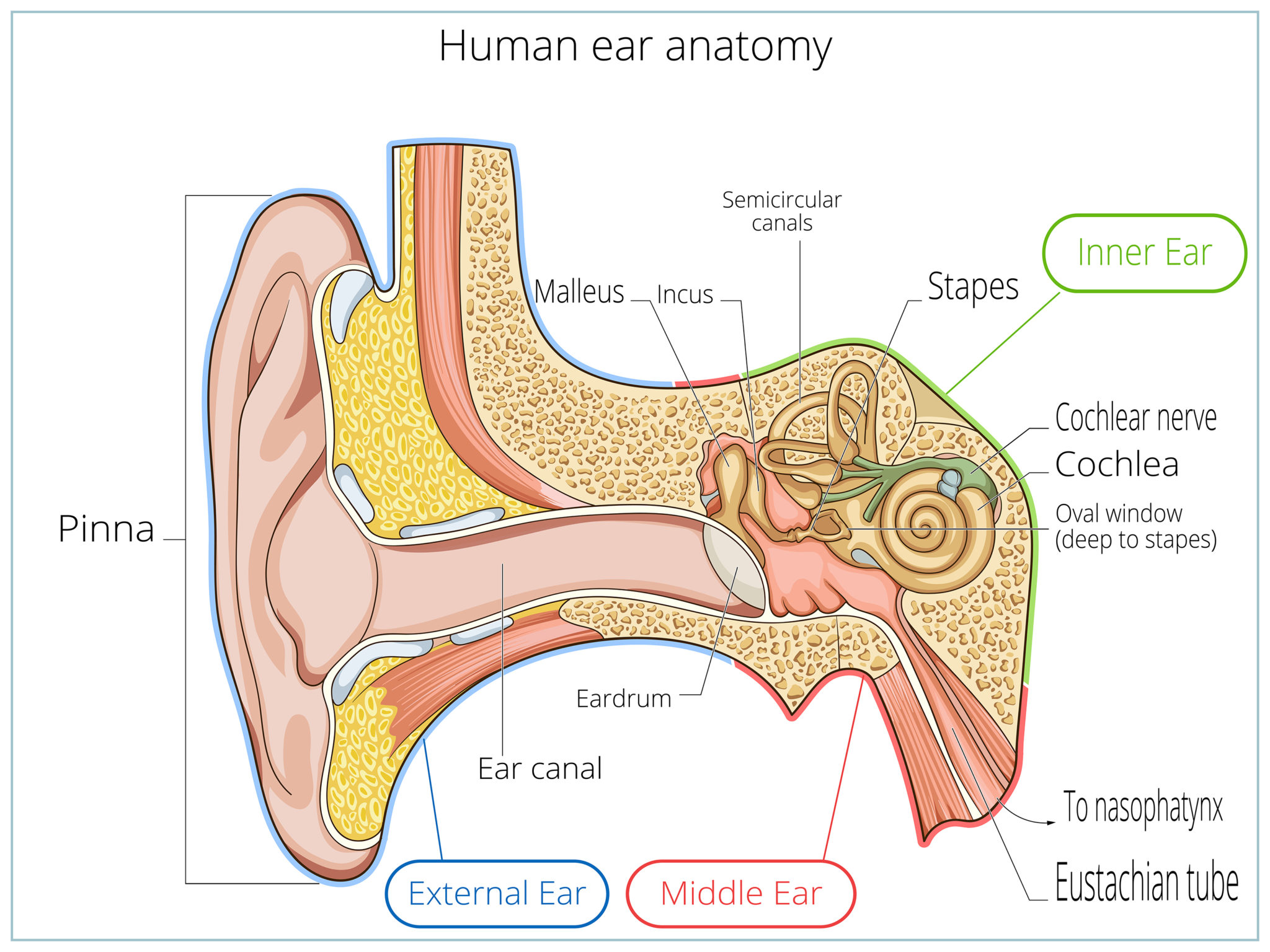
Ear Anatomy Causes of Hearing Loss Hearing Aids Audiology
The ear is structurally divided into three parts: the outer (external), middle and inner ear. The middle ear is an air-filled pressurized space within the petrous portion of the temporal bone, extending from the tympanic membrane (eardrum) to the lateral wall of the inner ear.

15.3 Hearing Anatomy & Physiology
Description: Structures of the Ear. The external ear contains the auricle, ear canal, and tympanic membrane. The middle ear contains the ossicles and is connected to the pharynx by the Eustachian tube. The inner ear contains the cochlea and vestibule, which are responsible for audition and equilibrium, respectively. English labels.
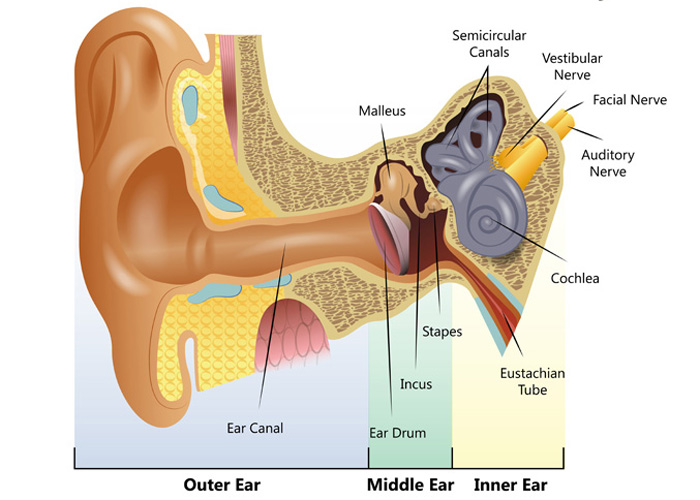
What is Meniere's disease? Hearing Link
Middle ear. Also known as the tympanic cavity, the middle ear is an air-filled, membrane-lined space located between the ear canal and the Eustachian tube, cochlea, and auditory nerve. The eardrum.
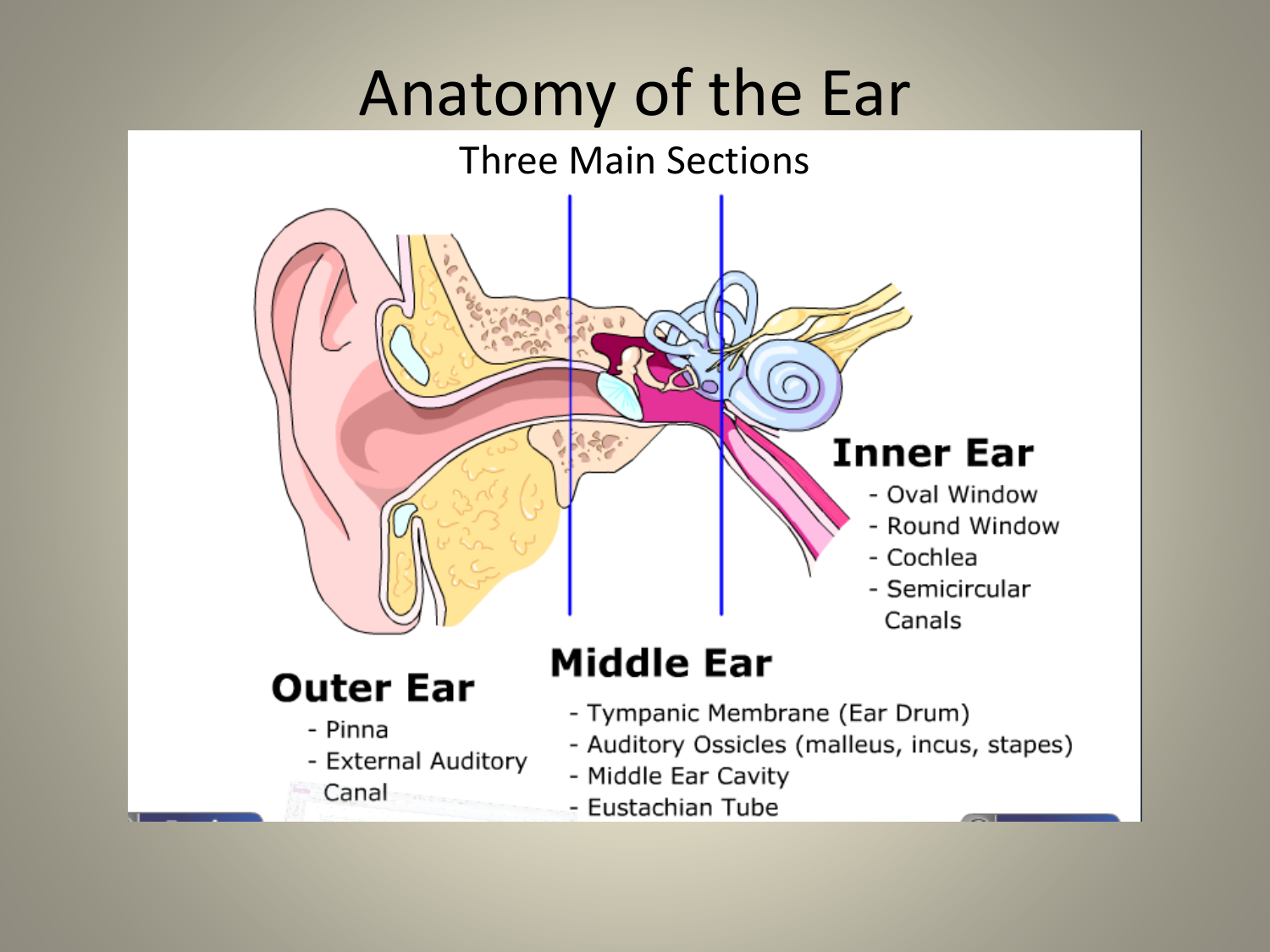
Anatomy of the Ear
Vestibule: A cavity considered a part of the membranous labyrinth, this structure contains two sacs: the utricle and the saccule. Via a structure on its outside wall called the oval window, it (along with another structure called the round window) is able to communicate with the middle ear, and it accesses the cochlea on the other side, with the semicircular canals behind and above it.
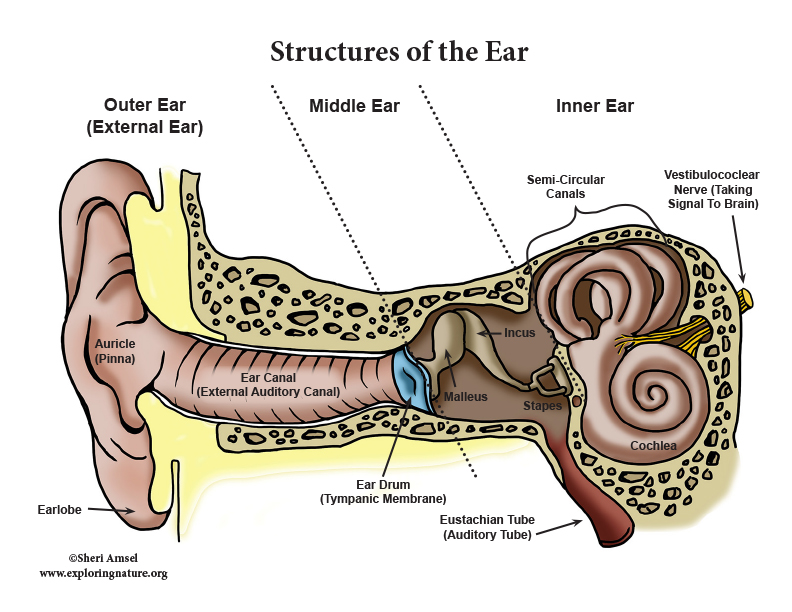
Hearing and the Structure of the Ear
Middle Ear Anatomy. The middle ear contains most of the small organs responsible for collecting and clarifying external sound waves. It also maintains air pressure balance in the skull through the regulation of the Eustachian tube. The middle ear is most susceptible to ear infections. It can also develop otitis media, which is a category of ear.
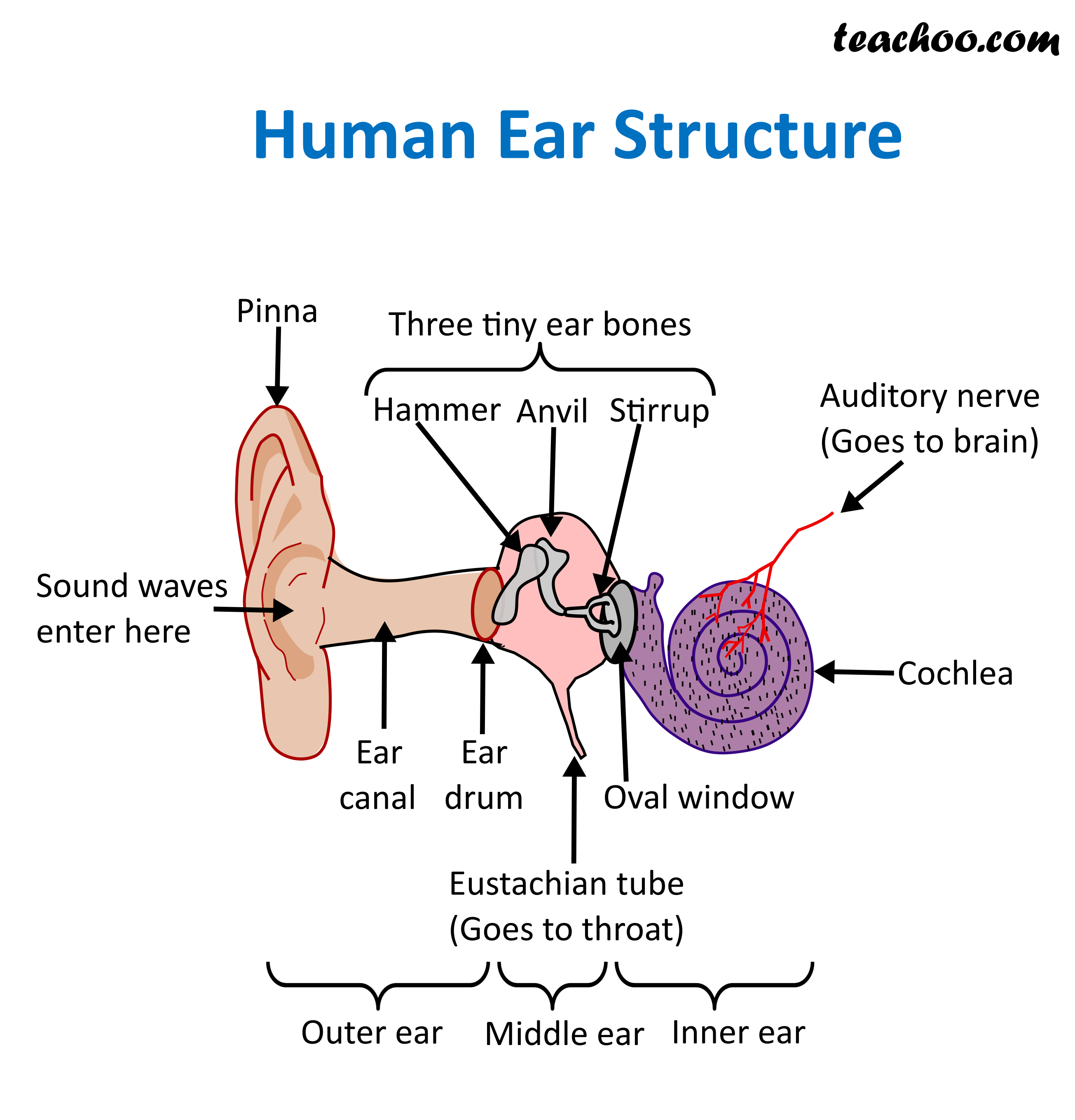
Structure and Function of Human Ear with Diagram Teachoo
Your outer ear and middle ear are separated by your eardrum, and your inner ear houses the cochlea, vestibular nerve and semicircular canals (fluid-filled spaces involved in balance and hearing). What is the ear? Your ears are organs that detect and analyze sound. Located on each side of your head, they help with hearing and balance. Advertisement